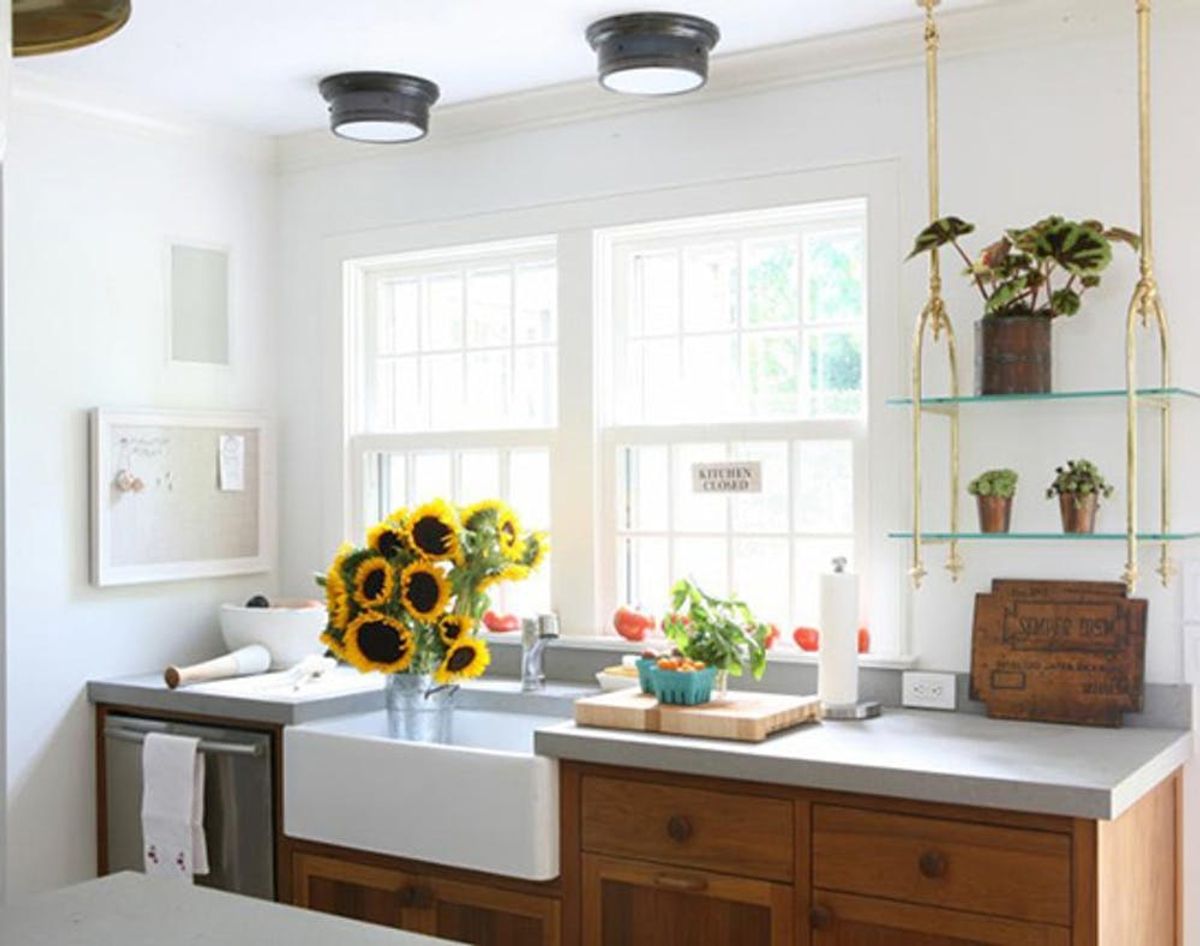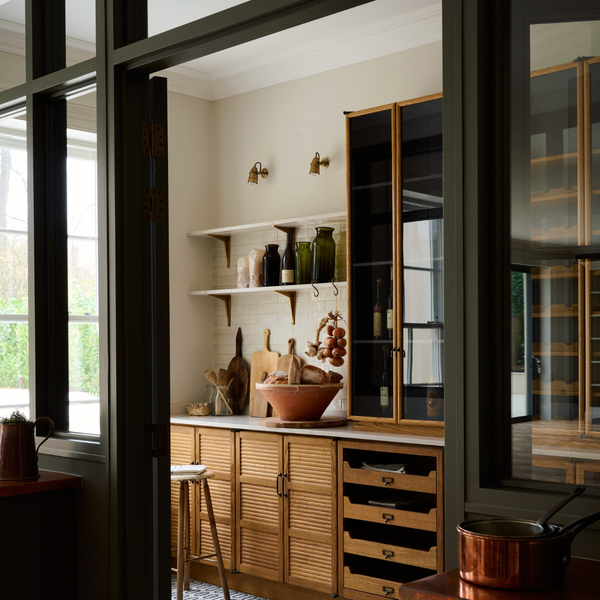Here’s how to make your kitchen both functional and fabulous no matter how small your space or your budget.
Your Guide to Designing an Efficient Kitchen

Designing an efficient and beautiful kitchen doesn’t have to be painful. A kitchen that works for you and your family isn’t dependent on its size or cost but rather the ergonomics of the space. Think of the kitchen on a boat: There is a place for everything, and the chef doesn’t have to take unnecessary steps to complete kitchen tasks. Commercial kitchens are another example of incredibly efficient spaces. Most are divided into work zones so the equipment, lighting and surface designs all work together so that the chef minimizes movement. Here’s how to make your kitchen both functional and fabulous no matter how small your space or your budget.
1. Establish Zones: The most effective kitchens will have established work zones. Some of this is easy to figure out: The cooking utensils should be placed near the cooktop; the dishwasher should be placed next to the sink. But even small changes, like placing the coffee mugs near the coffee pot, the wine glasses above the wine fridge or the cereal bowls near the cereal, make for efficient movement within a kitchen. Pro tip: Most kitchens should have zones for cleanup, food preparation and food storage. Other zone ideas are baking (mixer, measuring cups), drinks (wine, coffee or tea), mini-meals (microwave, snack foods), storage (additional dry food storage) and serving (platters and occasional serving pieces).
2. Create a Work Triangle: You’ll save steps in the kitchen by placing your most frequently used appliances in the correct location. The best tip for setting up an efficient kitchen is to place the three main functions of the kitchen (cleanup, cooking, food storage) close enough to each other so that they’re in a triangular pattern. Large kitchens may even have two sinks and create two different triangles. Each “leg” of the triangle should be no less than four feet and no longer than nine feet. Make sure that main traffic doesn’t cut through the triangle.
3. Lighting Is Everything: Lighting is one of the most important features of a kitchen. Without it, you won’t be able to chop safely or see how your food looks before serving. Task lighting (focused, down light), ambient light (from windows or overhead light) as well as decorative lighting (from sconces or table lamps) will give your kitchen the right amount it needs. Be sure you are using energy efficient bulbs that create a bright, cool light. Look for bulbs that are 4100 Kelvin or higher with a high CRI (color rendering index).
4. Stick to Standards: There is a reason why surfaces and appliances are placed at specific heights! Appliances and surfaces should be placed at a height that is easy for you to use without injury. Desks and dining tables should be 30 inches off the ground, countertops 36 inches and bars 42 inches. For some families, having appliances below the counter (like a microwave) can allow children to help themselves when preparing mini-meals or snacks. Not sure what size seat to buy? The seat of the stool or chair should be 16” to 18” shorter than the height of the surface.
5. Utilize Vertical Space: Another important tip for creating an efficient kitchen is to keep the space clear of clutter. This doesn’t mean you need to have a minimal look. It simply means you should create a specific location for your things so that you can actually get them off the counter and have room to work. No matter how small your space, utilizing vertical space with cabinetry, shelving or pegboard will help you max out storage in the kitchen. Not only will you have a spot for every pot, pan or panini press, you’ll make the room look larger. Even cookbooks and recipes can get vertical. Resting a book on a fold-down book holder (or iPad holder) or adding a magnetic strip above your prep space will keep the recipe free from spills and stains as well as keep it at an appropriate eye level.
6. Be Energy Efficient: Replacing and updating appliances that aren’t energy efficient is one of the best things you can do to create a more efficient kitchen. Not only will newer models help the planet by utilizing less electricity or water, they can help you save money on your utility costs. Some cities even offer rebates for upgrades. According to Energy Star, a dishwasher installed prior to 1994 is costing you an extra $40 a year in utility costs and wastes more than 10 gallons of water per cycle.
7. Add Pullout Drawers and Shelves: There’s nothing more frustrating that not being able to find something within the deep, dark hole that is the corner cabinet. Many big-box stores sell pullout drawers, shelves and other types of organizers that can really max out your cupboards and cabinets. Clear out the contents and use lazy Susans or extra shelves to create more storage and reduce clutter. More space between food items will allow for better air circulation. This is especially important in your refrigerator. When the fridge has good air circulation, your food will keep at a more even temperature and use less electricity.
Got any efficient tips of your own? Lay them down in the comments below!



















